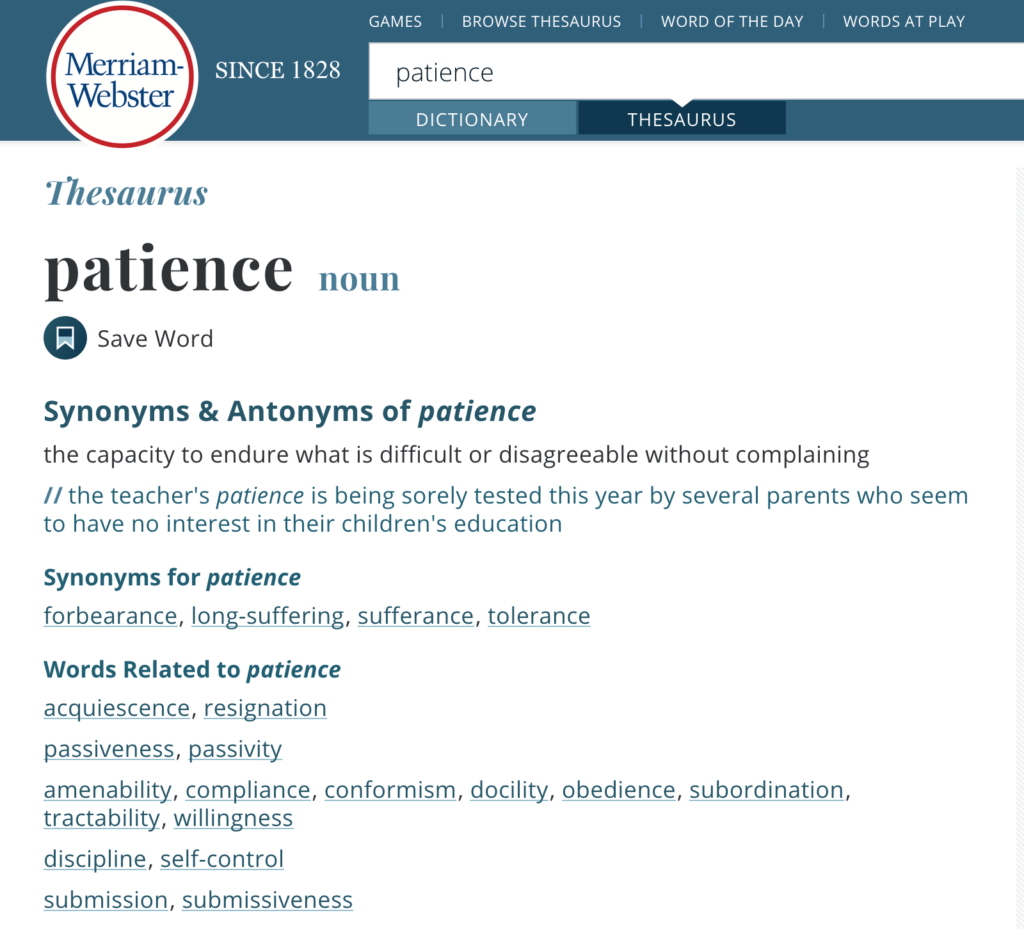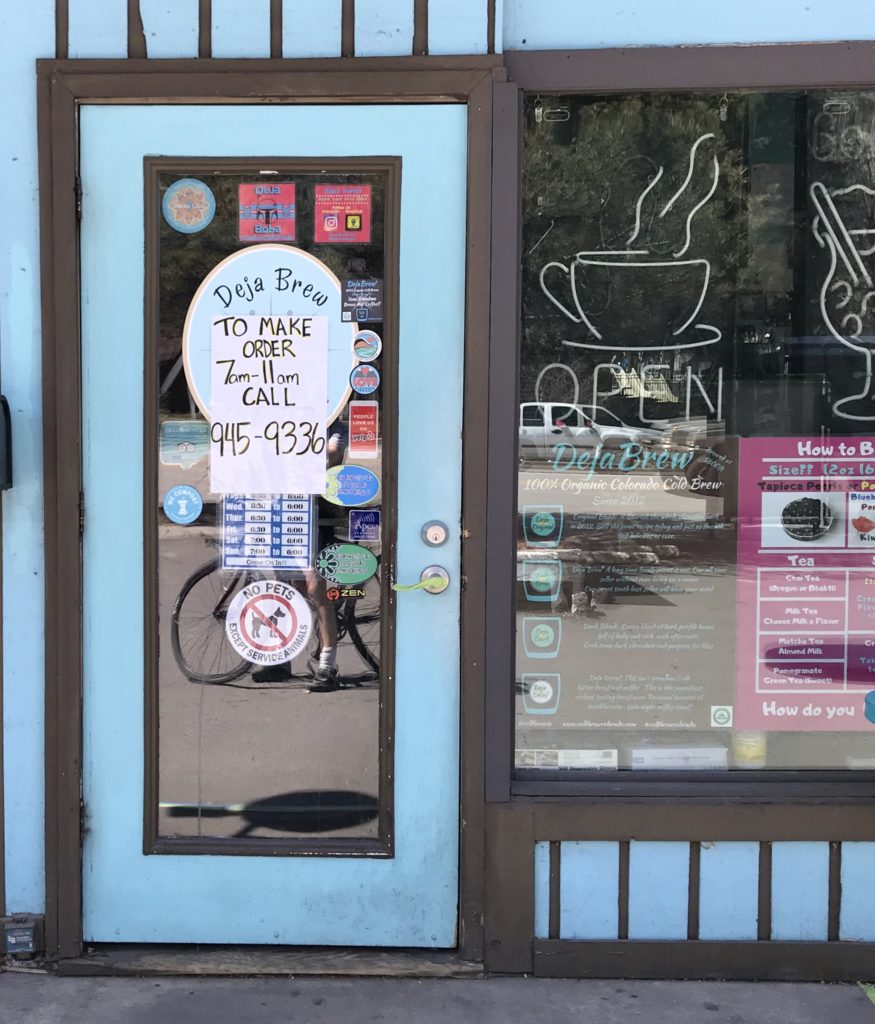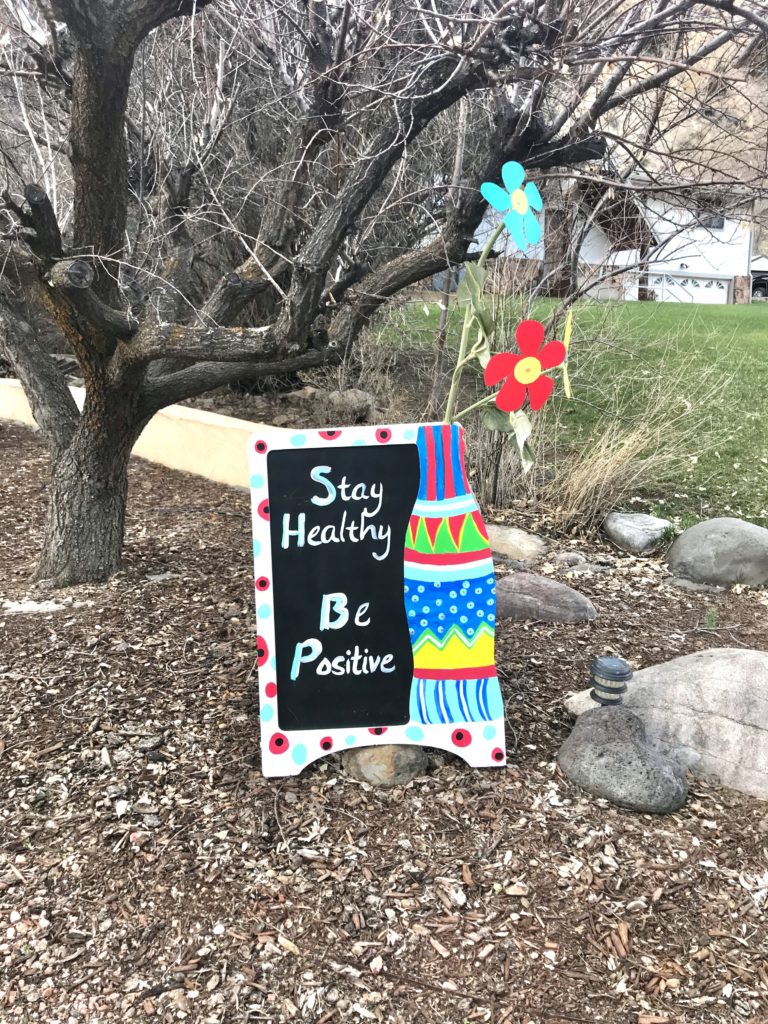When is the last time that Americans were asked to stay home and limit their activity? Unless you have recently had surgery or some other physical problem, the answer is probably never. When is the last time an American or a modern citizen of any country chose to slow down and limit activity? Seldom if ever.
This prolonged stay at home is challenging many skills. One of the most needed skills is patience.

Patience might be associated with passive resignation but in fact patience requires determination and endurance. Patience requires us to take the long view, to keep our eyes on long term value over short term satisfaction. What better way to describe our current state of living.
The long way home
It’s well and good to say that we need patience. It begs the question, “For what purpose?”. Patience without purpose would be an ignorant waste of time and effort. The purpose for our patience is clear; in order to eventually get close to people, to enjoy the social world we once knew, we need to stay apart. We need to do the opposite of what we want and listen to the reason of science; wash our hands , wear face protection in public and keep distance from one another. We need to stay home to return to the home we knew.
The desire to return to normal (home) has been enough to inspire patience in most people. It has inspired us to take coordinated action like we have never known. Not just in one town, state or country but worldwide. We are (mostly) acting in concert with one another, with the common goal of return.
The path we have chosen or agreed to walk has unintended benefits and challenges. Each day brings these to light, both on a national and a personal scale. Even in isolation we have found ways to be together with hope through Passover and Easter celebrations. We have continued to connect teachers with students and family with the sick and dying. We are learning to cook again. Parents have become teachers and are getting to know their children in ways they never dreamed.
As weeks are turning into months, the novelty of our isolation is becoming a long march home. As this continues, our patience is being tested. Can we endure for the long term? Will we build a new economy with liberty and justice for all?
Managing hope, fear and distraction.
Distraction is one of our favorite pastimes, in good times and bad. Distraction is used by mothers and fathers to manage infants and toddlers around the world. What better way to cajole a fussy baby or remove a prized possession from a two year old than sleight of hand. “Would you like to play with this?”
Modern adults are both victims and masters of distraction. And when the going gets tough, distraction provides the salve. Remember the last time you flew in an airplane? The fear of flying (is anyone immune?), the long wait, the cramped space in close proximity to strangers; all inspire us to get creative with distraction. With the discomfort we label as boredom, we come prepared or improvise various forms of distraction to fit the length of the en capsuled ordeal.
Distraction is the balm that soothes whatever ails us. It holds the promise of taking us away from where we are to the land of promise. Though the promise is seldom met, we feel we have made a skillful and satisfying move away from our discomfort and dis-ease.
Is there an alternative to distraction? What would it feel like if we reject distraction and just feel the feeling whether it is discomfort, fear or hope. What are the advantages to meeting discomfort head on?
Discomfort – my friend
This morning I woke at 4:30am. As I assessed my level of wakefulness while my thoughts began to search about and consider my options. I heard my dog Beau at the bottom of the stairs (always ready for me to greet and feed him). I considered the upcoming day and potential tasks and then considered my options for the moment; go back to sleep, read a book, meditate, write. As I lay with my stream of thought, I finally took some time to simply feel the energy of my body in it’s calm repose. In this relaxed mood, I took time to listen to my breath, scan my muscles and simply BE in the quiet moment.
This moment is all we have and each moment holds a choice. I am familiar with 12 hour work days, and 7 day work weeks. I chose to drive fast through the day’s agenda and drive my staff through it with me (though I had to beg for the overtime). I understand what it’s like to ignore my feelings and my family, eyes scanning the horizon for the next item. I have been hospitalized for ailments that were probably related to the push of work. Despite it all, I was sure that I was doing good and getting somewhere. Fortunately, I took time to meditate every morning and acknowledged the power of silence and watching my thoughts. It saved my life and made me much easier to live with.
Yesterday, Joni and I committed ourselves to a day of silent retreat and meditation. Given our required isolation, it seemed like an opportune time to make it complete. In the past we have done group and solitary retreats to improve our meditation practice and spiritual well-being. Self imposed isolation and silence can be a bit challenging at first but we have found it satisfying and enriching in the long run. Through repeated experience, we have made friends with silence and solitude.
The point of retreat is to draw a boundary and limit activity to the contemplation of the mind and body. Retreat allows for an increase the amount of time in meditation and contemplation; reading, listen, and contemplating books that connect us with our heart and mind. Except for eating and drinking coffee, we restrict our activities and indulgences like alcohol, watching movies, talking, recreational reading, news and surfing the internet. Essentially we cut out our usual preoccupation with business and general busy-ness.
Retreat isn’t something people are accustomed to and it isn’t magical. Just like any other exercise, the benefits are subtle but evident over time. Solitary retreat leaves us without the filters of distraction, alone with only our thoughts and emotions – whatever arises.
“Hello feelings. We have to talk”
This heading is a favorite of my meditation teacher, Tsoknyi Rinpoche. He uses it to remind us to say hello to whatever is troubling us, whatever is buzzing in the background of our mind. In his teaching, he points out what becomes obvious with practice, that much of our behavior is driven by forces at the periphery of our awareness. He suggests that we bring these forces to light, make friends with them, shake hands with them. Give them a job.
This moment in history is unprecedented. With the pressure to “return to normal”, it may soon change shape. Obviously there are important reasons to get back to work and revive this economy. At the same time, some of the instincts to get busy are unnecessary and destructive to loving one another and building a healthy community. Who would have ever thought that being apart would bring people together in this way. Given this, it isn’t a stretch to think that coming together again could tear us apart. The difference will be in the details of the method.
While we are always at a turning point in life, this is a moment of greater clarity. As dark as it is, the pandemic has opened a door of possibilities and choice. Many of us will take lessons from this time, allowing us to enrich our daily life. We will either nurture the lessons or rush to the next moment, only to reminisce about the good old days. There is hope that we can be the next, “Greatest Generation”, improved by these days of sacrifice.
On the other hand, there are political and social forces at work that beg us to feed the beast of the big economy; to buy and borrow or way back to “normal”. These are the same corporate forces that leveraged their way to dominance and will be hedging (literally) for their survival on the backs of consumers and the Gross Domestic Product. The alternative is that we recognize this folly and value living within our means, just as we might recognize the turbulent nature of our thoughts. We can set aside our expensive distractions for the value of family and friends. It is time to acknowledge the moment, whether it is uncomfortable or not. There are dreams to strive for. Many of them are right here at home. We can take the lessons of our retreat (stay at home) to bring us back to our center.
“Hello friend, we have to talk.”




